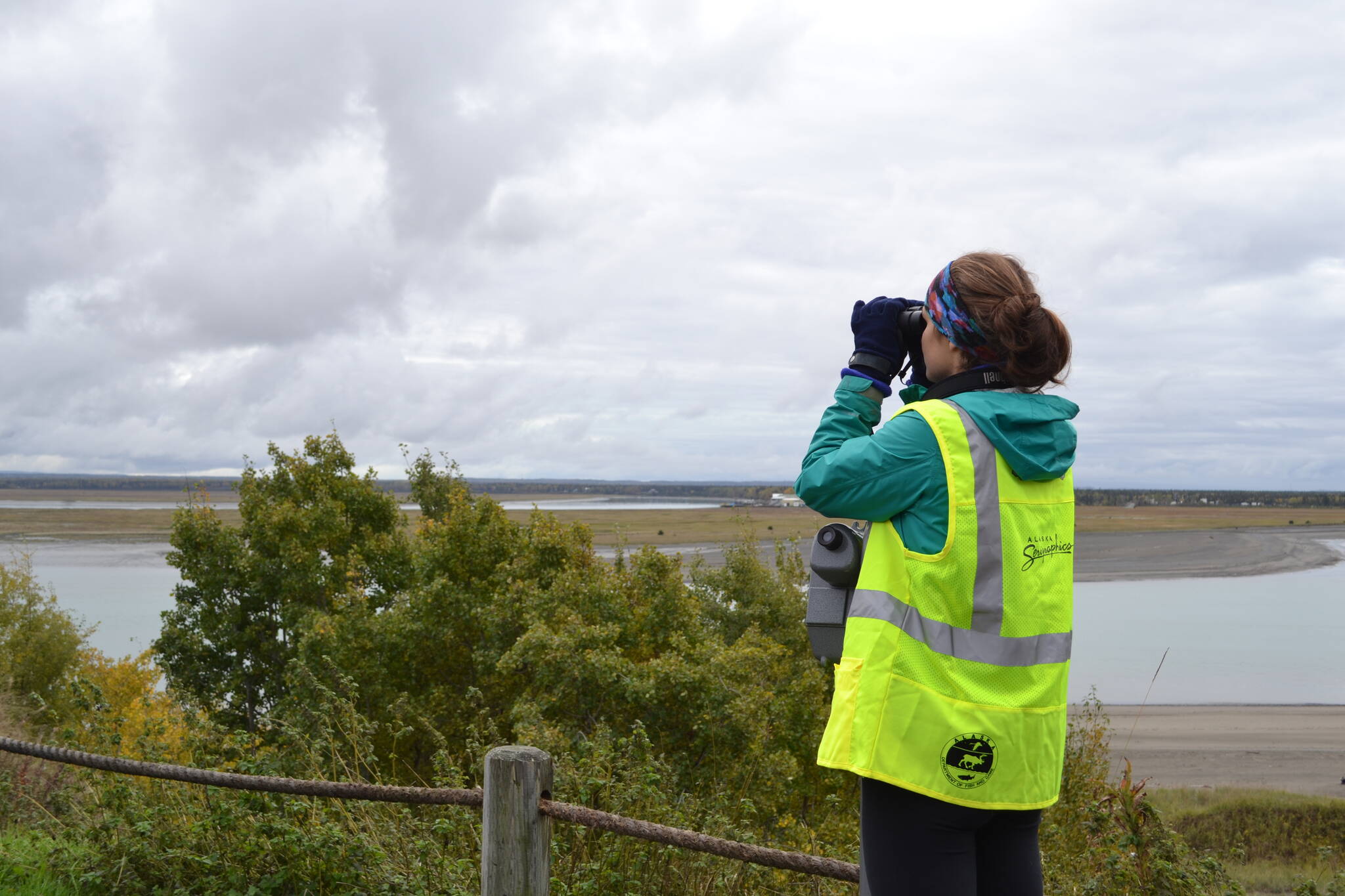All eyes will be on the Cook Inlet belugas next Saturday, Sept. 23, as Belugas Count! — an annual educational celebration of an endangered population in the Kenai Peninsula’s own backyard — returns.
This year is the fifth for the National Oceanic and Atmospheric Administration Fisheries’ Belugas Count!, and also serves as a celebration of 50 years of the Endangered Species Act. That’s why, Cook Inlet Beluga Recovery Coordinator Dr. Jill Seymour said, this Belugas Count! is bigger than usual, incorporating more local partners who work with other endangered species in afternoon festivals following the traditional viewing sessions.
The goal is to “reach out to the broader Cook Inlet community,” she said. But the event is still centered on the endangered population of Cook Inlet beluga whales.
According to NOAA, there are five populations of beluga whales in Alaska. The Cook Inlet population is the smallest, and the only one to be registered as endangered. Cook Inlet belugas were identified as endangered in 2008 and have been designated by the agency as a “Species in the Spotlight” since 2015.
Belugas Count! opens at 10 a.m. with viewing stations around Cook Inlet, each staffed with experts on hand to guide viewers in catching a glimpse of the whales passing by. Seymour said that folks should be “evenly guaranteed” to see belugas during the sessions, which are set at times when the tide is favorable. The stations will be open until 1 p.m.
In Kenai, a station will be located at the Scenic Bluff Overlook, right above the Kenai River. Seymour said the Kenai River is seeing lots of belugas this season, and that a second viewing session will be held at the same spot from 5 p.m. to 7 p.m. At the Kenai station, representatives of Kenai Peninsula College, the Alaska Wildlife Alliance, the Georgia Aquarium and the Shedd Aquarium will be on hand to guide viewers.
“It’s a really great time of year to see belugas in the Kenai River in particular,” Seymour said.
Seymour recommended attendees dress for the weather, and bring cameras and binoculars if they have them.
During last year’s Belugas Count!, Alaska Wildlife Alliance Director Nicole Schmitt said around 12-16 whales had been plainly visible from the site, even without the aid of binoculars or cameras.
Besides Kenai, viewing stations will be at Homer’s Baycrest Overlook, Hope Highway, the Alaska Wildlife Conservation Center, Girdwood, Bird Point, Windy Corner, and at five sites in Anchorage.
After the morning viewing, from 1 p.m. to 5 p.m., festivals will be held at the Kenai Chamber of Commerce and Visitor Center and at Anchorage’s Kincaid Outdoor Center.
The festivals, Seymour explained, have never been held in Kenai before. There will be booths, activities, an obstacle course and a selfie station. Seymour said there will be information and opportunities to get involved with other conservation measures for local endangered species, like becoming a community scientist with the Alaska Beluga Monitoring Program.
There will also be a series of scientific talks, linked between the Anchorage and Kenai locations so everyone can see all the same things. Seymour said these will include information about Cook Inlet belugas, a chat about the newest abundance estimates for the population, and an update from Alaska Pathology Veterinary Services, who help with necropsies on dead belugas. There will also be talks about other endangered animals, such as information from the Alaska SeaLife Center about Steller sea lions and a presentation about the North Pacific right whale.
SeaWorld San Antonio will also give a live update and a poolside chat with Tyonek, a Cook Inlet beluga who was rescued five years ago. He was found stranded and suffering from a variety of ailments in September. 2017.
Seymour said Tyonek is an ambassador for the population, the only one in captivity and the only one successfully rehabilitated after being rescued.
For more information about Belugas Count! visit facebook.com/BelugasCount
Reach reporter Jake Dye at jacob.dye@peninsulaclarion.com.

